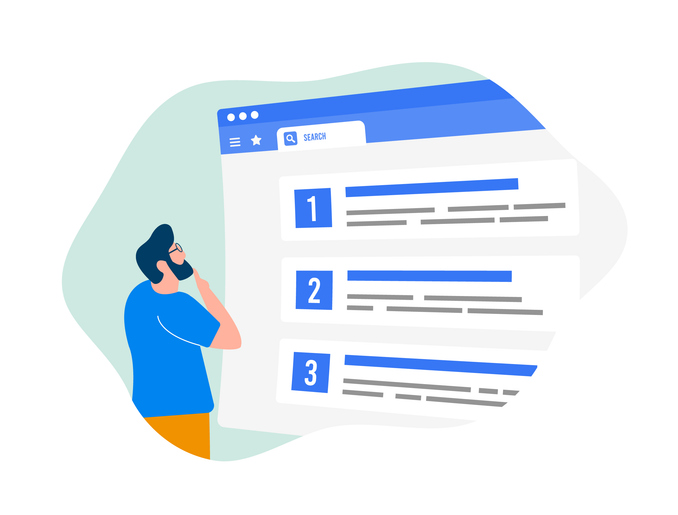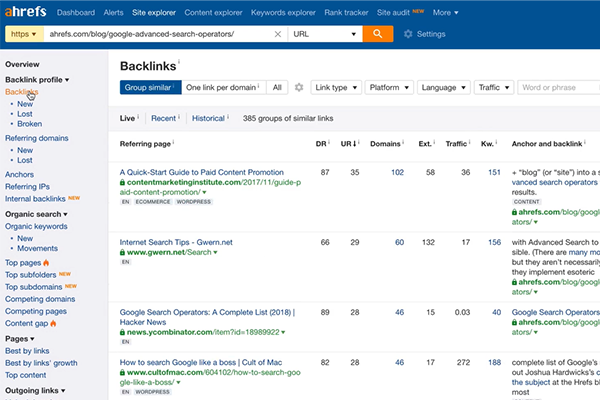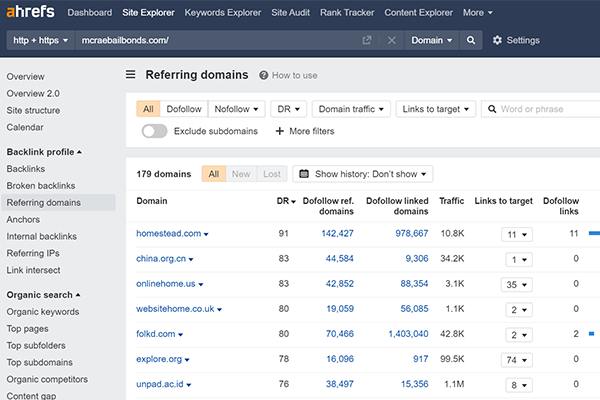
Still, even in 2023, there is nothing that more powerfully improves a local website’s rankings in Google and Google Maps than location and industry-relative quality backlinks. Ideally, you want to get backlinks from whoever links to your competitors, plus more.
Analyzing your competitor backlinks simply means using a search tool to see what websites link to the competitors that outrank you. This includes all types of do-follow and no-follow links; the more location and industry relevant and the more authoritative, the better.
In this article, we will get into the specifics of how you analyze your competitor backlinks, including what tools to use and what to look for.
Before I get into the meat of this article, I have a quick suggestion. If you found this article because you are trying to learn Local SEO, then I suggest you start with one of these three articles: “How To Do Local SEO – An In-Depth Overview!”, “What Is Off-Page Local SEO?“ and “What is Competitor Backlink Analysis?“.
I show you how to do everything I talk about in this article in the video below!
What Is The Best Backlink Search Tool To Use?

The two best, or at least most popular, backlink search tools are Ahrefs.com and Semrush.com. Both are excellent, which one you choose will be purely your preference.
Ahrefs is slightly cheaper, and because I am more familiar with it, it is the one I prefer using. But I hear great things about Semrush.com, too. I have signed up for both in the past; I just always gravitated towards Ahrefs.
I also recently found a free tool called Neil Patel’s Backlink Checker that I like. I use it along with Ahrefs because I find different backlinks sometimes in one that I didn’t find in the other. It has some cool advantages I like as well. I show you how to use both tools in the above video!
Both tools allow you to sign up month to month, so many individuals and smaller agencies will just sign back up for a month whenever they need to use the tool again, which is handy.
How To Search Competitor Backlinks
If you look at the image below, you can see I grabbed a local business and did a search on its backlinks. To do this, I stuck the URL in the search bar, selected the domain, and did a search. Then, on the left-hand column, I usually select backlinks; more often, I like to select referring domains.

Then I sorted the search by clicking on the “DR” column title, and it listed the backlinks with the highest domain authority first. You can also filter the list by Dofollow or Nofollow if you wish to.

I apologize that this screenshot I took didn’t turn out very clearly. But hopefully, you can see that when looking at a list of referring domains, you can click on the number under “Links to Target,” it opens up a list of all the backlinks from that domain.
This is how I like to look at them. Then, I can click on each one, and it takes you to the website where the link is to your site. Sometimes, if it is a long article with a fair amount of links, it can take a bit of searching to find the actual link. But it tells you on the right of the list the anchor text used and the URL of your website that they linked to.
How I Like To Look Through Their Backlinks
So, I like to go through my competitor backlinks, as I showed above, looking at each domain from the highest authority to the lowest and the various links coming from that domain and what they were.
I like to keep the list showing both Dofollow and Nofollow because Google wants us to have a mix of both. Most are usually Dofollow, except links for some social media pages and directories like Facebook and Yelp.
I just go through their backlinks from the highest authority to the lowest and copy and paste all of the websites they have backlinks from to a Google spreadsheet that I don’t think would be worth having.
Low Authority & Spammy Backlinks
Another important thing to compare is the low authority backlinks and compare the quantity of those as well as the types as compared to your site. If you find you have many more of those spam backlinks, such as foreign language websites, porn, gambling, etc., than your competitors, especially if you have similar good backlinks to your competitors, it could also be the spammy backlinks holding you back.
I have gotten clients who were penalized because of spammy links they paid for with past SEO people they hired. And I had to disavow all of the spammy backlinks to Google to get the penalty removed. Then, I was able to get them to rank well.
Be cautious disavowing backlinks, though. Sometimes, disavowing backlinks can actually hurt your ranking. I only do it as a last resort when I know a site has been penalized. There are a lot of garbage backlink services out there. You never want to point garbage backlinks to your website itself.
The Types Of Relevant Backlinks You Will Find

You will often find several types of quality backlinks out of the backlinks that your competitors have that you don’t. Remember you want all the good ones they have, if possible, plus more.
Social Media & Business Directories
The obvious first type will be business directories and social media sites. Set up profiles in those right away. Don’t just get the backlinks there, but fill those out completely, everything, and put in a fairly long keyword-rich quality business description.
You want to upload geo-tagged optimized photos, too. Often, in the business description or in photo descriptions, these sites allow you to put additional links back to your website.
Organizations & Associations
The second type will be organizations like the Chamber of Commerce and other industry or city organizations or associations. Sign up for them (fill out profiles as mentioned above) and get those backlinks, even if they cost money.
Content Backlinks
The third type is the ones you really, really want to get. These will be actual content backlinks. Not every local business ranking number one has these, but they pull significant authority when they do.
Some of these are with real websites, and you just need to contact the website and ask if you can write a post, give some advice, or sponsor something in exchange for a mention and a link.
Private Blog Networks (PBN)
Others will be websites set up on expired high authority domains for the purpose of linking to the business’s site (a.k.a. PBNs). You won’t be able to get on these. But you can create similar ones yourself: see “How Do I Acquire High Authority Backlinks?” and “How To Build A PBN The Correct Way.”
Remember, the most important backlinks to get are backlinks with locational relevance and industry relevance. An example of a locally relevant site would be any local website from your city, like maybe a local city magazine, club site, etc. An example of industry relevance would be an industry magazine site, industry association site, or a blog whose topic is your industry.
